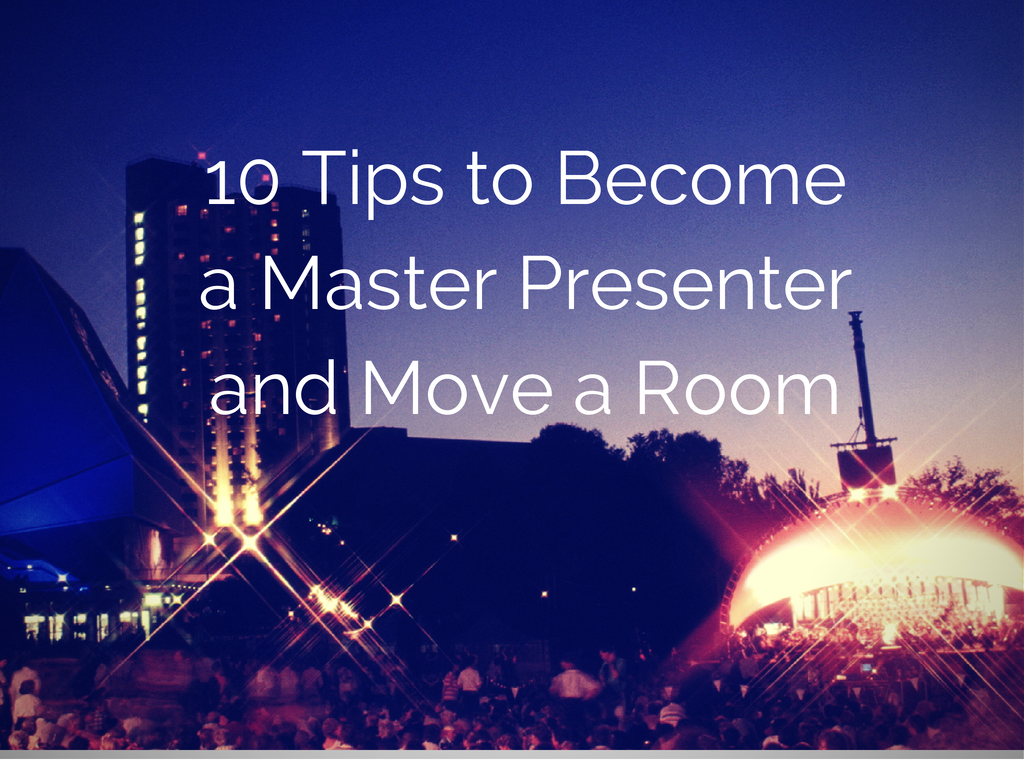Got an important presentation coming up at work?
Want to nail that perfect pitch?
You’re in luck because today, we’ve got some hot presentation tips for you.
Enjoy!
How to Become a Master Presenter and Move a Room
1. Know your audience’s pain
Before anything, you want to connect with your audience. You want to know their deepest pain points.
Everyone has a fear, a pain point – something that keeps them up at night. The question is: are you able to walk in their shoes, empathize with your audience and build trust?
2. Don’t suffer “the curse of knowledge”
According to Wikipedia, the curse of knowledge is “a cognitive bias that leads better-informed parties to find it extremely difficult to think about problems from the perspective of lesser-informed parties”.
Simply put, you are so engrossed in and well-informed on your topic at hand that it becomes hard for you to chunk it down for your audience so they can understand and make sense of your presentation.
This is a curse for the master presenter. Don’t let this bias stop you from clearly putting across your point.
And to do that, we go back to #1 where you have a fine understanding of your audience’s pain points. When you understand where your audience is coming from, it becomes easier to speak in a language they can relate with and “get you”.
It’ best not to overestimate your ability to explain your topic to a novice. This is where empathy comes into play. Don’t assume your audience “knows” the basics. Do your research and gauge your listeners’ knowledge.
3. Be humble
There is a story about how Socrates would deliver his speech from a lower level as compared to his listeners who sat at a higher level in amphitheatres.
This is a classic example of humility when in front of a crowd. Socrates was an expert at his topic yet pretty humble during his talks.
Just like Socrates, you can bring humility in your presentations in many ways – like a bamboo tree in a Japanese forest that sways with breeze but has a solid foundation beneath the ground, adopt the philosophy of “bend but not break” to remain humble.
4. Add some eye candy
Humans are wired for visual stuff. A majority of us are visual learners – most of us can better recall what we just saw as compared to what we were just told.
Adding visuals will transform the way your audience learns. Visual aids will help you grab their attention – so why not surprise them with a funny video or shocking statistic chart?
And while we’re on that, go give Visme a try and create beautiful interactive infographics and charts for your presentations!
5. Start with Why
Following the 4MAT model of presentation, first connect with the Why.
Why should they care? Why should they sit down for another hour and listen to you?
If you know their “why”, your “how” will take care of itself. Speaking of the “why” will leave your audience emotionally charged up and craving for more.
6. Then talk about the What
The “what” is arguably the smallest section of a presentation, but it’s still vital. Talk about what you’re going to cover here.
You don’t want to spend too much time here – just a definition or two will do.
7. Seal the deal with How
According to 4MAT, if your goal is to impart them with new knowledge and teach them a particular skill, your “how” section will be the longest.
This is where you do a demo and make them practice their newly-learned skill in the form of small groups.
8. Make them laugh
You’ve probably sat through a boring presentation. And then there’s one that you will never forget and had a great impact on you.
What’s the difference between the two?
It’s usually the entertainment factor.
Remember-able presentations always leave your audience with a great feeling and a few good laughs.
How do you get your audience to feel that? Ask them to participate from the beginning. Welcome laughter.
Because here’s the thing: People don’t laugh when something’s funny; deep inside, they laugh when they feel good. Your job is to make them feel good.
Another tip – notice your comments that get a laugh. Recycle them in your other presentations.
To the audience, you appear impromptu; but in reality, you’re just well-planned.
9. Don’t be afraid to pause
It’s OK to take long pauses during your presentation. In fact, it’s highly encouraged.
Pauses give your audience a chance to reflect on what you’ve just said. This strengthens your rapport with them.
Take a look at these most popular TED talks and notice how the speakers will always take a pause after introducing a new idea.
10. Finish like Colombo
Lieutenant Colombo always finished with “Just one more thing…”
Although you don’t have to keep saying that every time you finish, you do want to announce that you’re now going to wrap up.
You can easily weave in a story in the conclusion part. Then follow up with a call to action.
By all means, take questions, but don’t close with a Q & A.
Add a powerful short story or metaphor to reiterate your main point will do. It ties in things together –your last words are what your audience will always remember. So put good effort in your closing.
How else can you deliver a speech like a master presenter and move a room? Got more ideas? Share with us in the comments!










Pingback: 10 Tips to Become a Master Presenter and Move a...
Pingback: 10 Tips to Become a Master Presenter and Move a...